

 The Accurate Reloading Forums
The Accurate Reloading Forums  THE ACCURATE RELOADING.COM FORUMS
THE ACCURATE RELOADING.COM FORUMS  Other Topics
Other Topics  Recipes for Hunters
Recipes for Hunters  Mushroom expert needed.
Mushroom expert needed.Go  | New  | Find  | Notify  | Tools  | Reply  |  |
| One of Us |
I think the brown ones and the lighter colored (younger?) one of same species are Daedaleopsis confragosa Polypores or blushing bracket. I'm not sure about the whitish ones. Could not identify. Unable to get a spore print after 10 minutes. Gills are very fine & taper to the edges of the cap. Gills are tapered where they connect to the stem. Could be poisonous. 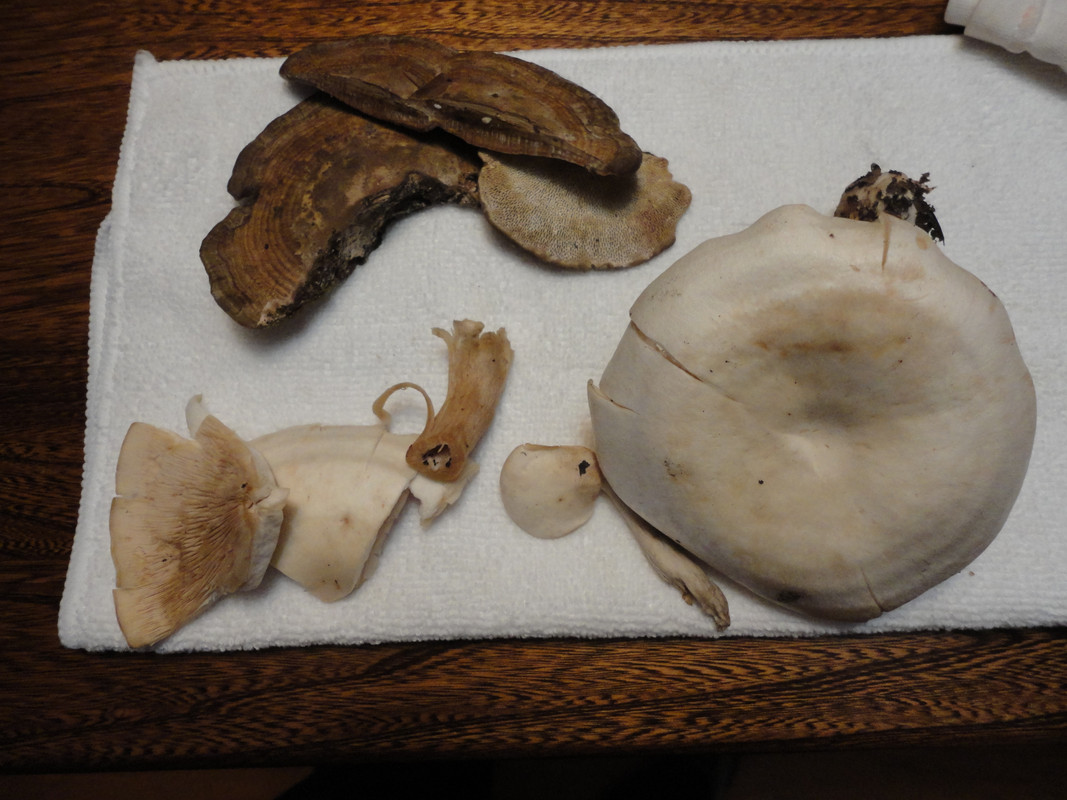  Life itself is a gift. Live it up if you can. | ||
|
| One of Us |
Ann, you're up. Never mistake motion for action. | |||
|
| One of Us |
CB, yes, your bracket type fungi is a polypore. Not positive on the white one but it looks like it belongs in the Russulaceae . Might be a 'milky', which is under that group of mushrooms. See the faint rings on the cap surface? That's a characteristic of milkies. The brownish staining on the gills look like oxidized sap, hence the reason they are called 'milkies'. When freshly cut or bruised the mushroom exudes a white milky sap which often dries brownish colored. There are some 'edible' species within that group but I have never had any that I enjoyed. They have a weird texture and most of the edible milkies are peppery or bitter. Some people use certain species as a substitute for black pepper. One that is really pretty and unique is called an 'indigo milky'. Look that up to see what I mean. I've noticed the box turtles like to eat many of them. I'll often find scuttled mushroom caps throughout the woods with turtle beak harfs taken out of them. I get bummed out when they harf on my prized boletes. ~Ann 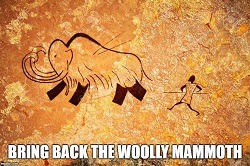 | |||
|
| one of us |
Goodness, Ann, you are indeed a woman of many talents. I typically only harvested morels in the spring. Southern Oregon, where I used to do this, was cursed with many toxic mushrooms including Amanita phalloides, the "Destroying Angel," so I always played it super safe. Some of those I learned from were very serious amateur mycologists and were fond of both spore prints and their oil-emersion microscopes to identiy their finds. There is hope, even when your brain tells you there isn’t. – John Green, author | |||
|
| Administrator |
That is why she is on a MEN’s site! We love you Ann | |||
|
| One of Us |
Thanks Ann, Oh heck, I forgot one. My inclination is that it is edible. But, I could not find one trumpet shaped 'shroom with fine gills that only go part way down to make a positive I.D. Top is a little rough in surface texture. Flesh texture is firm all over. Was eggshell white when picked yesterday. The center cut is fresh. 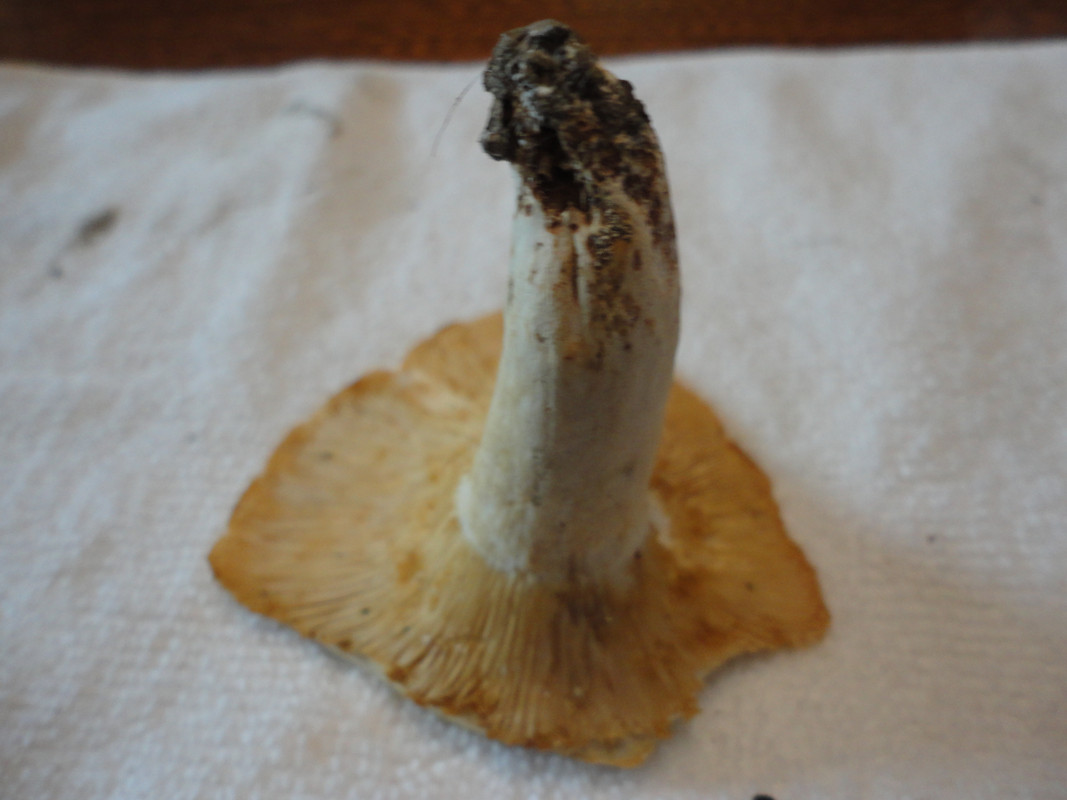 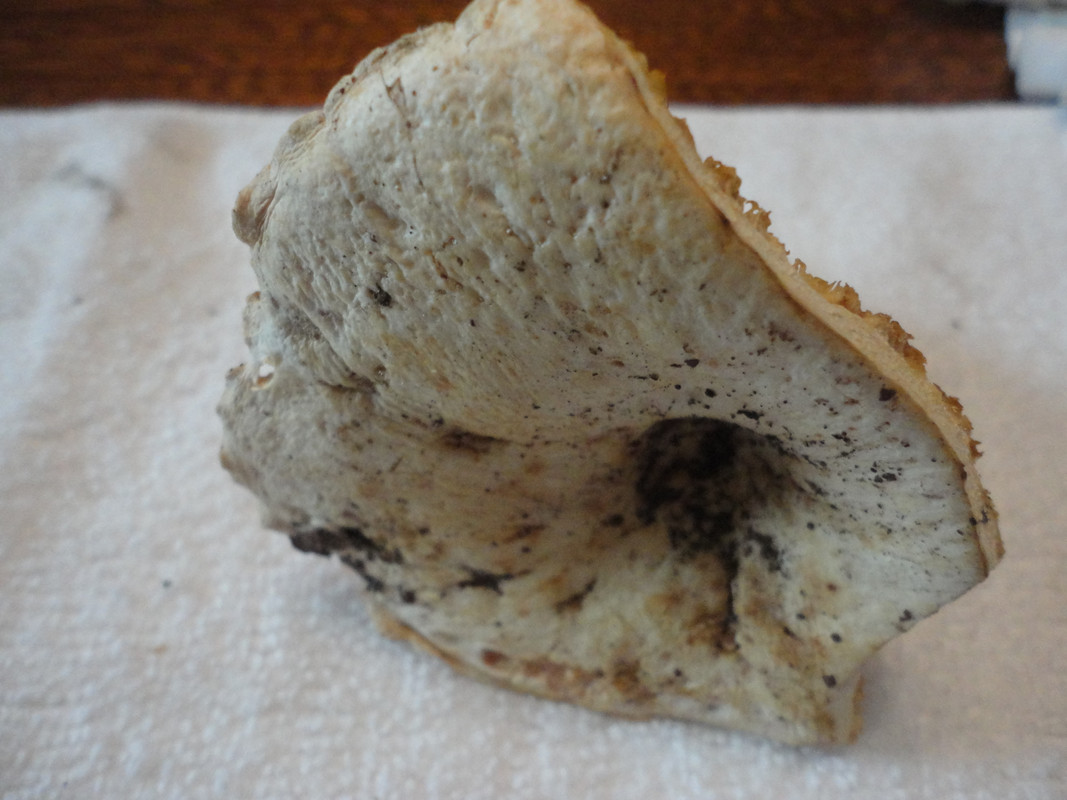 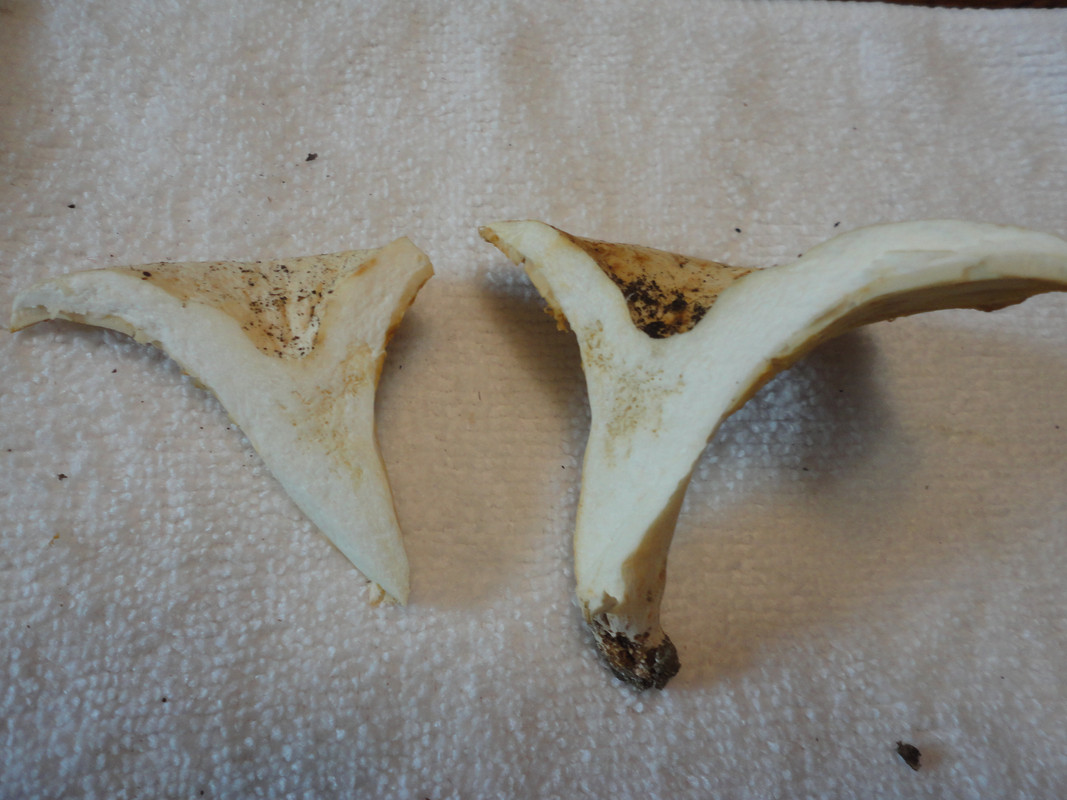 Life itself is a gift. Live it up if you can. | |||
|
| One of Us |
Thanks, Saeed! Bill, I don't know many of the amanitas though some are edible. Keeping in mind all mushrooms are edible once. Custom, see that vase shape and the way the gills tie into the stem of your cut specimen? Classic russula. https://www.mushroomexpert.com/russula.html Milkies, (Lactarius) as mentioned, fall under this group. https://www.mushroomexpert.com/index.html If you go to this link scroll waaay down the list to find lactarius and russulas. It's a good website for ID'ing US fungi. The owner/author, Kuo, is one of the best experts out there. He's published several books, several are in my library. He's done several presentations at my local Myco club as well. ~Ann  | |||
|
| One of Us |
Also, for spore prints consider doing them on a piece of glass and leave the cap on it overnight. Spores can be different colors and may not show up well on paper but you will be able to find them on a piece of clear glass. ~Ann  | |||
|
| Administrator |
In Sweden, they have a mushroom poster. There quite a number on it - several dozen. A handful are poisonous. And every single one of the poisonous ones has another that looks like it! So we only collect chanterelles. My daughter is very good at finding them. | |||
|
| One of Us |
Saeed, I have to imagine there are a lot of very good boletes to be found in Sweden. I know I would be in heaven if I found a forest full of them. I have many varieties when I lived in New England years ago. It is a much wetter environment and has large evergreen forests which are conducive to a lot of good edible fungi, especially boletes and chanterelles. Here, where I live now, the summers are hot and dry but many edibles are mycorrhyzal with our abundant oak forests. There are 5-6 species of chanterelle here. Just need some rain and they pop briefly. So do the seed ticks. ~Ann  | |||
|
| One of Us |
Started a fresh thread on chanterelles picked today. Life itself is a gift. Live it up if you can. | |||
|
| One of Us |
Ann: I ruled out milkies on that last one. No bleeding from an underside scratch was the catch. Russula sounds right. Thanks for thhe information. CB Life itself is a gift. Live it up if you can. | |||
|
| One of Us |
Loving this mushroom thread! Keep it going. It is so invaluable! When I was in law school eons ago, there was a particular area in the Pacific Northwest that attracted people by the droves in the late summer/fall looking for mushrooms. I later found out that it was the psychedelic mushrooms that attracted the crowds of people! | |||
|
| One of Us |
Yes indeed! In the early 70s, east of Austin, where the cattle were fed with rye grain there were vast amounts of territory covered with cow pats spouting psilocybin mushrooms. And yes there were a lot of hippies picking. Never mistake motion for action. | |||
|
| One of Us |
I've never done any illicit drugs but if given the chance I think I would try those psilocybes. My woods has been dry and quiet for mushrooms but I found a few hedgehogs last week and there are some green spored lepiotas popping up in the dooryard lawn this morning. Too bad the GS lepiotas are not edible. They are a really big mushroom and quite pretty. The hedgehogs (Hydnum repandum) got used up already.   This is another very good mushroom species for eating and are very easy to identify. Note they do not have traditional gills or even the pores of a bolete. They have 'teeth'. They are mycorrhizal with hardwood trees, oaks here and when I lived in New England they were with birch. Unfortunately they are not common where I am now. They do not fruit every year. ~Ann  | |||
|
| Powered by Social Strata |
| Please Wait. Your request is being processed... |
|

Visit our on-line store for AR Memorabilia

